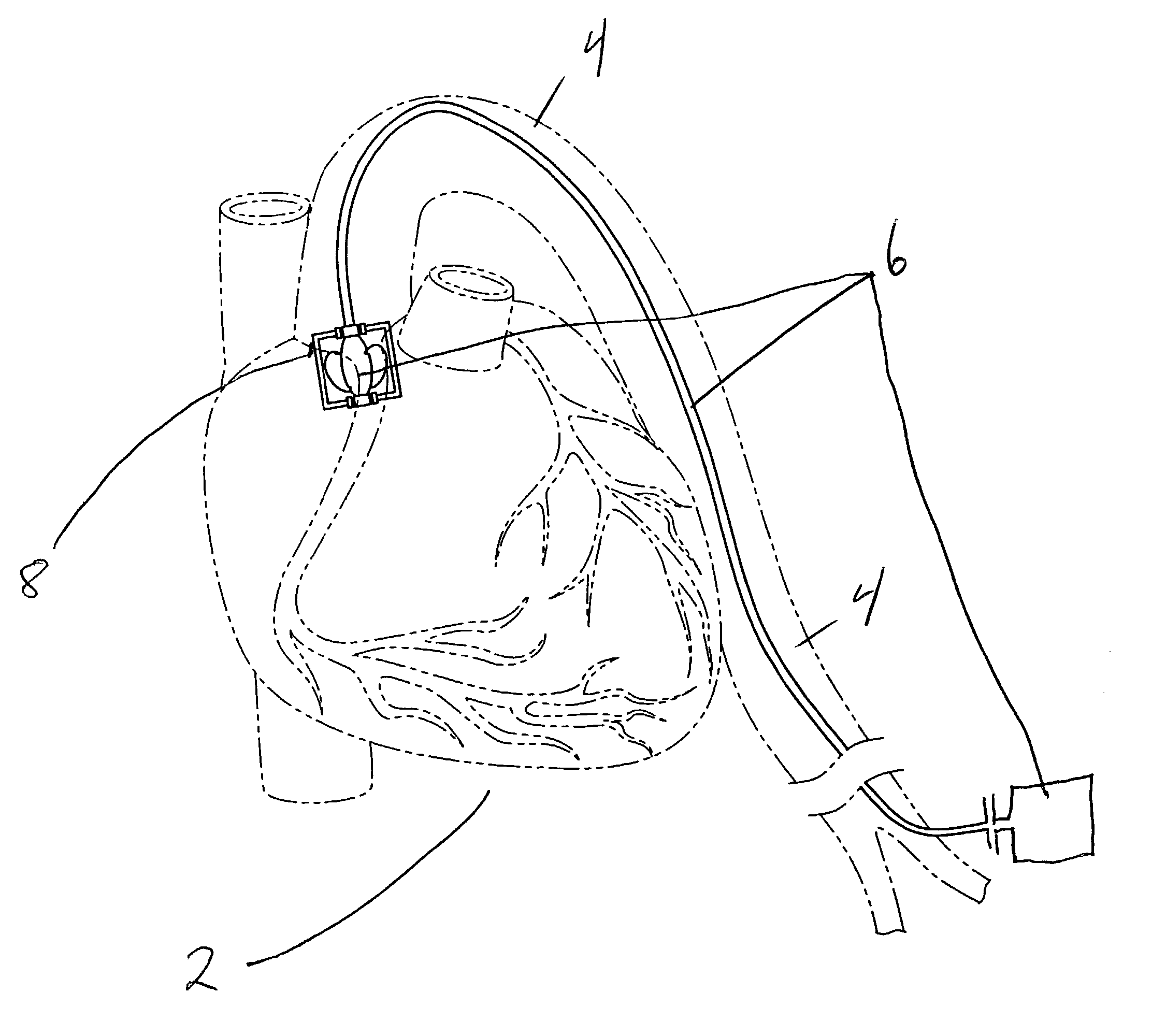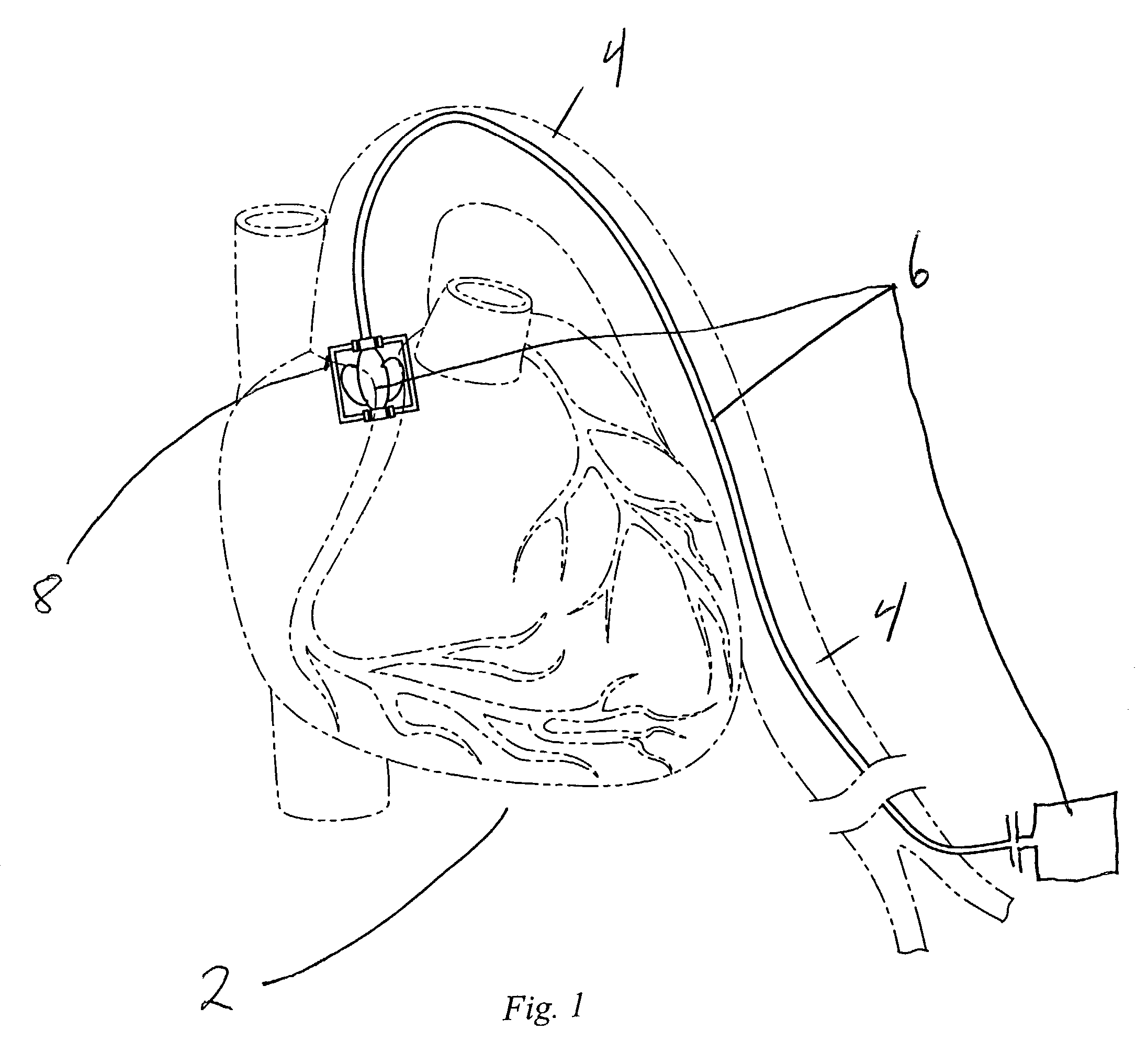Temporary blood circulation assist device
a technology of assist device and blood circulation, which is applied in the field of temporary blood circulation assist device, can solve the problems of inability inability to maintain constant blood pressure, and inability of iabp to create blood pressure, so as to prevent laceration, perforation and possible collapse
- Summary
- Abstract
- Description
- Claims
- Application Information
AI Technical Summary
Benefits of technology
Problems solved by technology
Method used
Image
Examples
example i
Aortic Valve Placement
[0060]A patient suffers the effects of left ventricular dysfunction and a procedure using the described invention may be chosen. The patient may be prepared for the procedure in the customary manner. The femoral artery approach may be chosen and the circulation assist device may be advanced to the aortic valve. The described circulation assist device may be then placed across the aortic valve to provide blood to the body due to the left ventricular dysfunction. The stator housing may be positioned across the aortic valve after the stator housing exterior has been adapted to fit that particular patient's aortic valve, with the valve size determined by ultrasound measurement or other suitable means. Here, the stator housing may be adapted to sit across the aortic valve in which the anulus fibrosus may measure greater than 3 cm. A two blade semi-lunar impeller may be chosen. The pitch of the blades may be between 15 and 20 degrees. The stator housing may be positi...
example ii
Pulmonic Valve Placement
[0062]Due to right ventricular dysfunction, it may be desirable to use the invention across the pulmonic valve. The procedure may be performed as above. Here, the direction of impeller rotation may be used to draw blood either into our out of the right ventricle. Blood may be pulled from the heart towards the proximal aspect of the circulation assist device and moved across the pulmonary valve. The metal coil in the first drive shaft may be rotated in the reverse direction, and impeller 12 may be adapted to operate in the reverse direction. Alternatively the impeller may be rotated in the same direction as in the aortic valve embodiment with impeller blades reversed and adapted to move blood in the opposite direction. A one-way valve may also be employed. In this case, it may be desirable to select a tow-blade impeller with a classic tear drop shape. A pitch of 15–20 degrees may be selected and the RPM chosen at between 700–2000 RPM. A flow rate of 1.8 L / min ...
PUM
 Login to View More
Login to View More Abstract
Description
Claims
Application Information
 Login to View More
Login to View More - R&D
- Intellectual Property
- Life Sciences
- Materials
- Tech Scout
- Unparalleled Data Quality
- Higher Quality Content
- 60% Fewer Hallucinations
Browse by: Latest US Patents, China's latest patents, Technical Efficacy Thesaurus, Application Domain, Technology Topic, Popular Technical Reports.
© 2025 PatSnap. All rights reserved.Legal|Privacy policy|Modern Slavery Act Transparency Statement|Sitemap|About US| Contact US: help@patsnap.com



